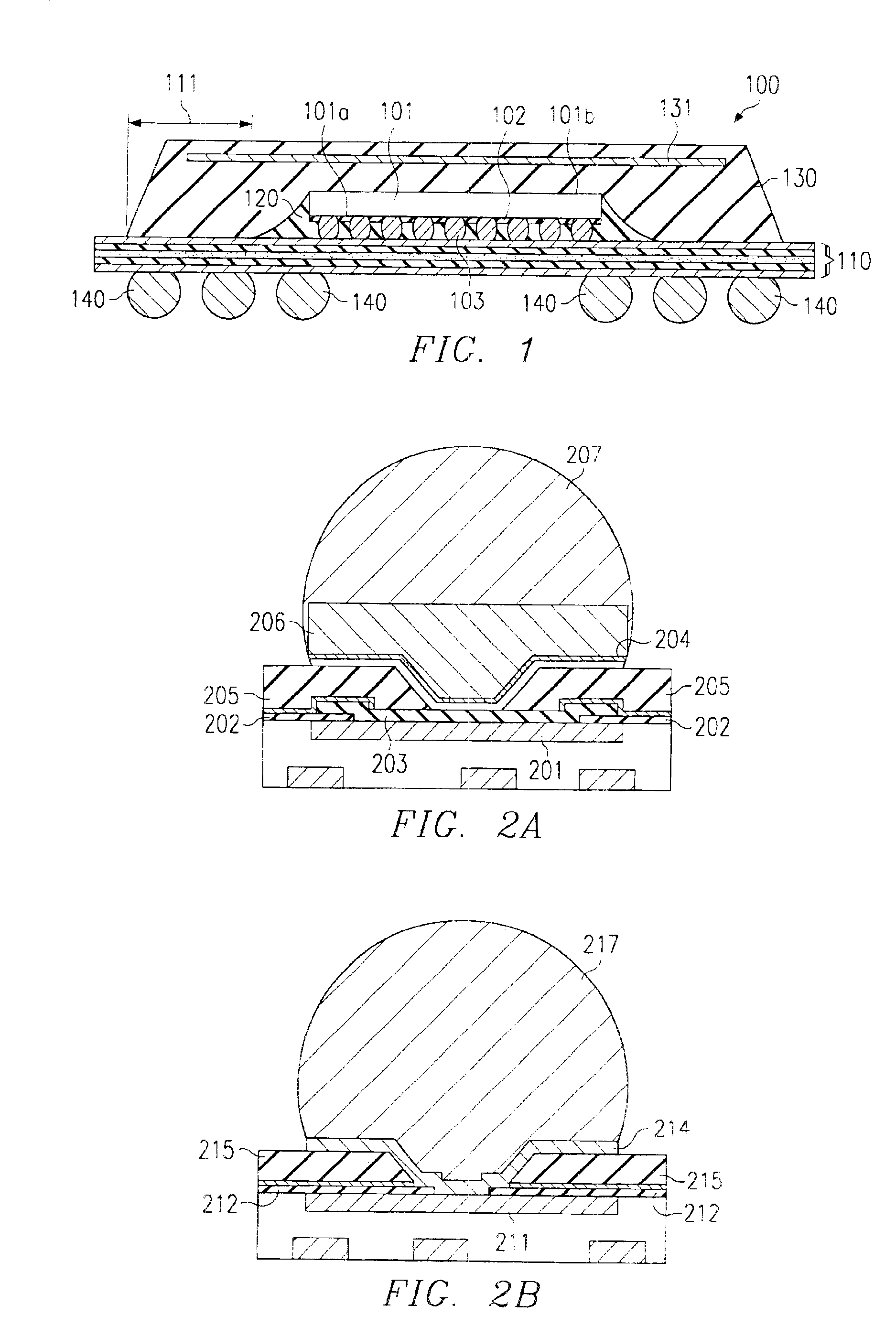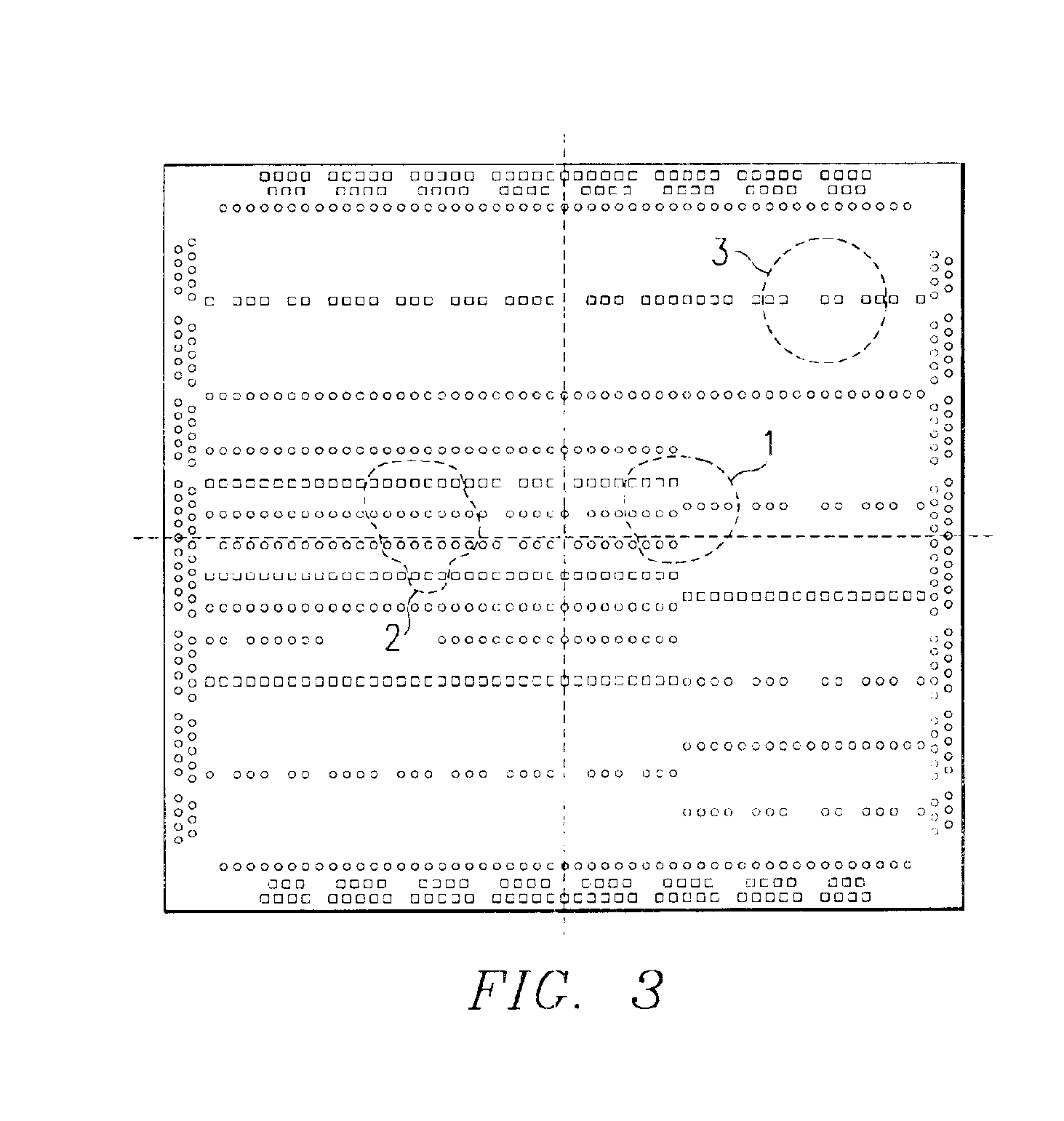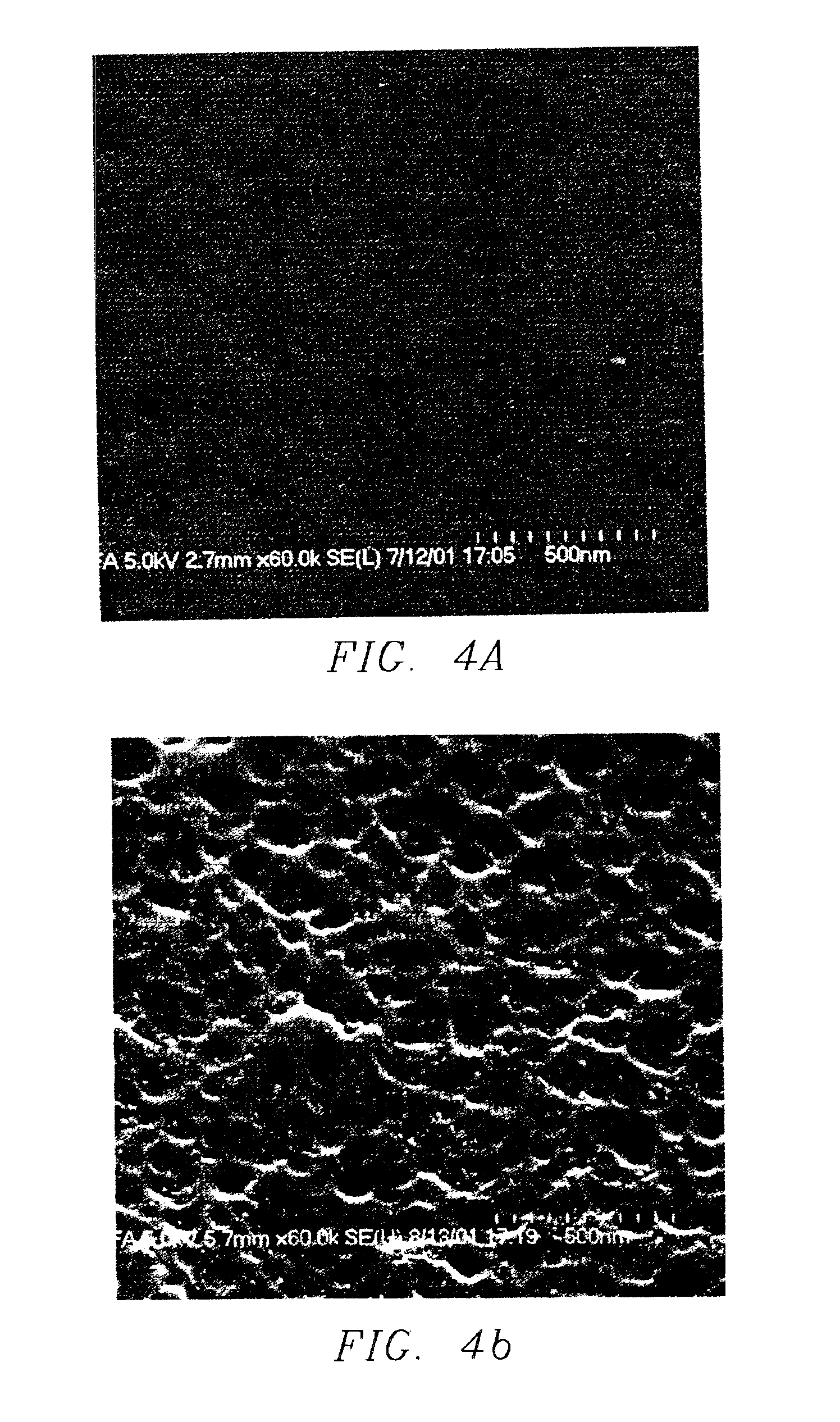Adhesion by plasma conditioning of semiconductor chip surfaces
a technology of semiconductor chip and surface, which is applied in the direction of semiconductor devices, semiconductor/solid-state device details, electrical apparatus, etc., can solve the problems of unresolved technology of reliable adhesion of the underfill material to the semiconductor chip and to the various substrates employed, and create a gap between the chip and the substrate, etc., to improve the surface affinity to adhesion, improve the adhesion, and clean the polymer surface
- Summary
- Abstract
- Description
- Claims
- Application Information
AI Technical Summary
Benefits of technology
Problems solved by technology
Method used
Image
Examples
first embodiment
FIGS. 7A and 7B describe the structure of negative photosensitive polyimide in the polymer coat over the active chip surface. FIG. 7A, applicable to the ester type of polyimide, shows the photoreactive group indicated by “P”. Enhancing the number of “dangling bonds” and adhesion sites by the plasma conditioning contributes to the improved surface affinity to adhesion.
FIG. 7B, applicable to the ionic type of polyimide, shows the electrical charges involved in the locations of ionic binding. Here again, “P” indicates the photoreactive group. Enhancing the number of “dangling bonds” and adhesion sites by the plasma conditioning contributes to the improved surface affinity to adhesion.
second embodiment
FIG. 8 describes the formation of poly-benzoxasol in the polymer coat over the active chip surface. The formula shows the base polymer as the precursor of the CRC-8000 series. Heat treatment is then transforming the base polymer into poly-benzoxasole as the post-bake formulation of the polymer.
FIGS. 9 to 11 are schematic cross sections of a number of different plasma apparatus, and thus plasma processes, which are all suitable for the plasma conditioning of whole semiconductor wafers according to the present invention. It should be stressed that the plasma conditioning method of the present invention is equally successful for whole wafers before “sawing” into individual chips, or after singulation into individual chips. In the latter case, the plurality of chips remains still attached to the supporting tape (the so-called “blue tape” held within a sturdy frame).
The apparatus of FIG. 9 is referred to as a “reactive ion etch asher”. In FIG. 9, inside the bell jar 901 are the pedestal ...
PUM
 Login to View More
Login to View More Abstract
Description
Claims
Application Information
 Login to View More
Login to View More - R&D
- Intellectual Property
- Life Sciences
- Materials
- Tech Scout
- Unparalleled Data Quality
- Higher Quality Content
- 60% Fewer Hallucinations
Browse by: Latest US Patents, China's latest patents, Technical Efficacy Thesaurus, Application Domain, Technology Topic, Popular Technical Reports.
© 2025 PatSnap. All rights reserved.Legal|Privacy policy|Modern Slavery Act Transparency Statement|Sitemap|About US| Contact US: help@patsnap.com



